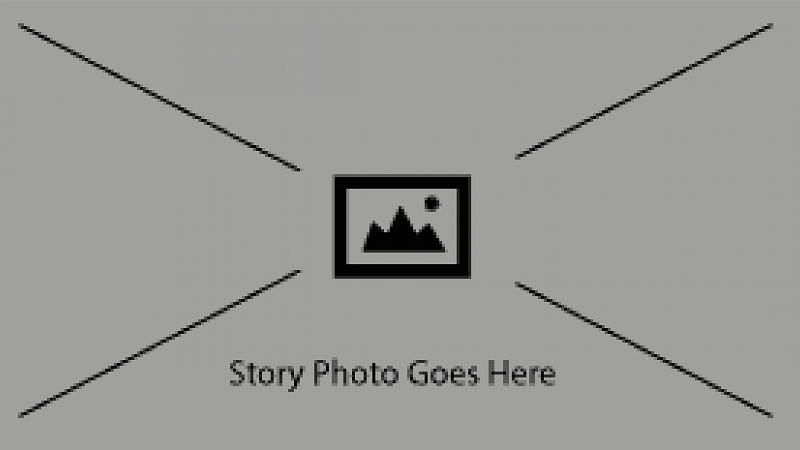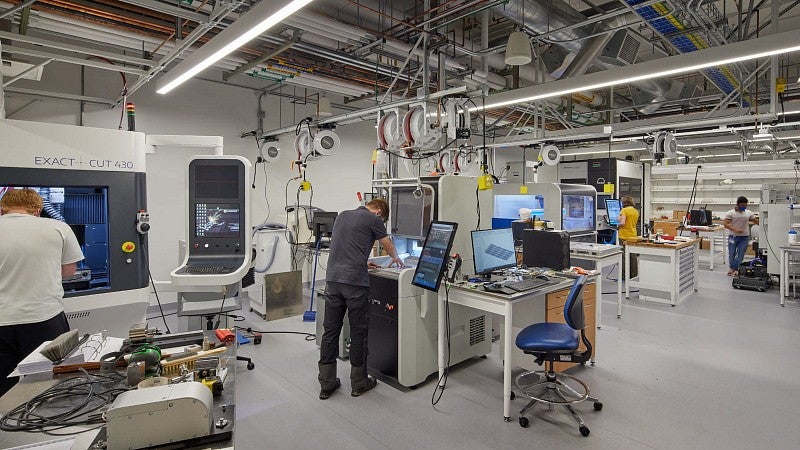

Philomath, Oregon-based “rural artist” Karin Bolender has more in common with scientists in the Phil and Penny Knight Campus for Scientific Impact than many might realize. An “artist-researcher” who playfully calls herself “principal investigator” of the Rural Alchemy Workshop (R.A.W.), Bolender says her current project is less about producing material artworks and more about holding space for creative experiments to happen.
Bolender was the first featured artist in the Center for Art Research Project Incubator Program, a joint program between the Knight Campus and the College of Design funded by the Ford Family Foundation. Her art materials include both contemporary conceptual frameworks and material elements brought in from her small art-farm homestead in the Coast Range hills outside Philomath, including special mud, an exhumed western saddle, and a range of art research questions. Her creative-critical work spans rural-urban and environmental art-science interfaces, alongside feminist science studies and environmental humanities — an area in which Bolender has a PhD.
Bolender dubbed her Knight Campus conference space “the unclean room” — a play on its proximity to the building’s research clean room core research facility located in the lower level of the Knight Campus and its contrast to the R.A.W.’s usual dirty environs. While researchers on the floor below her used the clean room to fabricate next-generation micro-and nano-scale devices, Bolender used her space to explore complex and messy conceptual questions and materials, ranging from mud cake to pulp Western novels to forest-product industrial supply chains.
The focus of Bolender’s residency was to expand upon her R.A.W. PostLibrary project. We caught up with her midway through her residency, which comes to an end later this month, to ask about that project, her thoughts on the Knight Campus, and the many connections she’s made during her time here.
Give us your 30-second elevator pitch for the work you’re doing in the Knight Campus.
The R.A.W. PostLibrary is literally a library on a fence post, sited within rural home pastures and forests, in relation to the ecological art-research practice that is the Rural Alchemy Workshop (R.A.W.). But it is also a conceptual proposition that questions how we might make space for unexpected forms of exchange and co-composition amidst all the different inhabitants of places, whether mammalian or microbial or otherwise. When traditional libraries closed during early (COVID-19) lockdown in 2020, the R.A.W. PostLibrary began to propose openings for new kinds of exploratory space for more porous storytelling and knowledge-making exchanges in and with places—beyond book-bound, linguistic, anthropocentric models we tend to take for granted. My residency in the Knight Campus is dedicated to finding new ways to power the PostLibrary’s aims.
What attracted you to the CFAR Project Incubator?
As an interdisciplinary ecological artist, I am constantly negotiating my practice across different modes of research and communication. I see the Center for Art Research as a great gift to artists working in contemporary modes that participate in, and between, different disciplines that work from diverse assumptions and principles and sometimes do not know how to talk to each other very well. My work is attuned to both benefits and challenges of art-science collaboration. While artists and scientists both do experimental “research,” their methods and outcomes often take very different forms. I think this tension can be generative, and it certainly has been for my work here during my residency.
Tell us a bit about your farm and its role in your work? Is that the location of the Rural Alchemy Workshop (R.A.W.)?
I founded the R.A.W. in 2008 on a derelict farmstead with a ramshackle barnyard and acres of hardwood forest in Carnesville, Georgia. In 2011, our whole big family herd (at the time, four donkeys, two dogs, two humans, and one cat) moved west, and since 2014 the R.A.W. has grown into a plot of pastures and patchy forests in the Coast Range hills just west of Philomath — traditional homeground of the Champinefu Kalapuya (people). Celebrating its ten-year anniversary in 2018, the R.A.W. began shifting gears toward new ways to both reach out and to go deeper into places and ways we inhabit them — to enmesh and share its mode of contemporary creative explorations locally and worldwide. The R.A.W. reckons with hidden layers of the local landscape, while at the same time cultivating connections with other rural environmental-art projects around the US, Europe, Australia, and other places.
What exactly is the PostLibrary?
My work has long focused on the idea of co-authoring stories with untold others in specific ecologies—from donkeys and dogs to watersheds, mud, and microbes. The PostLibrary is a physical and conceptual space and network for exploring these ideas and making connections with other projects doing similar things.
Why do you think you were selected for this program?
I’m not sure I can say why, exactly, but I can say it has been quite enjoyable to hold conversations and to play within the seemingly vast chasm between my own dusty, messy, DIY, hyperlocal rural practice and the shiny-new, cutting-edge, global technoscientific Knight Campus space. I am utterly grounded in the living mud of the R.A.W. barnyard and watershed, but I also work and participate in larger frames and conversations across contemporary environmental and bioart, feminist science studies, cultural anthropology, and many other related fields and discourses. I am keenly aware that even the rural barnyard is never separate from the laboratory in the biopolitical entanglements of the twenty-first century, and this sense is amplified further by the ways our experiences are presently shaped by a global pandemic …. I think the CFAR Project Incubator deliberately makes innovative space for this kind of broader questioning about relations between artistic and scientific modes of research and communication. I very much appreciate the chance to hold space for these conversations as part of the CPI program.
What can you tell us about the alternative power element of your project?
I initially proposed to assemble a solar-power system for the PostLibrary …. A conversation with (CFAR director) Brian Gillis a couple of months before the residency opened up my thinking and led to an idea that now seems blaringly obvious because it is so perfect: the R.A.W. PostLibrary should be powered by compost! A central feature of the R.A.W. is that it is home to four asses, essential participants in the R.A.W. practice for more than a decade. So we have plenty of good manure on hand. Both physical and metaphorical aspects of composting fit so well with this project.
Knowing nothing about electrical engineering, I sought guidance from Jeffrey Garman (senior research assistant and machinist) and Geordi Helmick (fabrication lab manager) in the Technical Sciences Administration. I had found some information indicating that a small amount of voltage can be created with a thermoelectric generator (TEG) using hot compost and a cold source (the more temperature difference, the more potential power generated by thermoelectric devices via the Seebeck effect) … As it turns out, a lot of current scientific research is trying to harness heat waste into usable energy, but the TEG system needed to convert compost heat to energy for this project does not yet exist. So along with TSA electrical engineer Clifford Dax, the TSA crew have been working with me to try to engineer a TEG system for the R.A.W. PostLibrary. Design and manufacture of the R.A.W. compost-TEG device are underway in the TSA and Fabrication Lab, with the expectation that it will take ongoing experimentation to get it working. Meanwhile I am exploring a newly ignited passion for composting, seeing how hot can I get my piles to amplify the T differential and generate some power.
You’ve had people visiting your space during your residency. What role do they play in your work?
During my residency, The Unclean Room hosted some illuminating conversations with UO artists and researchers, including a couple of the other CPI fellows, Colin Ives (February) and Carla Bengtson (January). In mid-November, the room also hosted one event that brought together … the Pulping Posse, a group of artists and researchers — the core of whom are members of Eugene Contemporary Art — who have … worked in the soil in and around the seasonal pond, burying things and digging them up again exactly one year later, and exploring the possibilities of different “pulping” processes. Pulping is a concept I’ve been working with for a few years now, involving the material and conceptual transformation of books--especially pulp westerns—through exposure to flowing time, weather, and various manual manipulations …. At the end of the residency, I also hosted a cohort of UO MFA students, who asked super illuminating questions that helped delve even further into the questions and materials present in the space.
How has this experience been for you? What have you learned? What will you take away from your time in the Knight Campus?
Being in closer proximity to the UO community during my residency has been nourishing for all of my projects. I’ve had many important conversations that lead my research in new directions. The process of working with the TSA engineers to develop a prototype for the TEG system has been exciting and certainly expanded my understanding and appreciation of engineering and available technologies. With help from Geordi and that brilliant crew, I’ll be able to bring home and wire up a TEG device that will become a vital component of a new material-conceptual system, which will power the R.A.W. PostLibrary in new and unforeseen ways.


